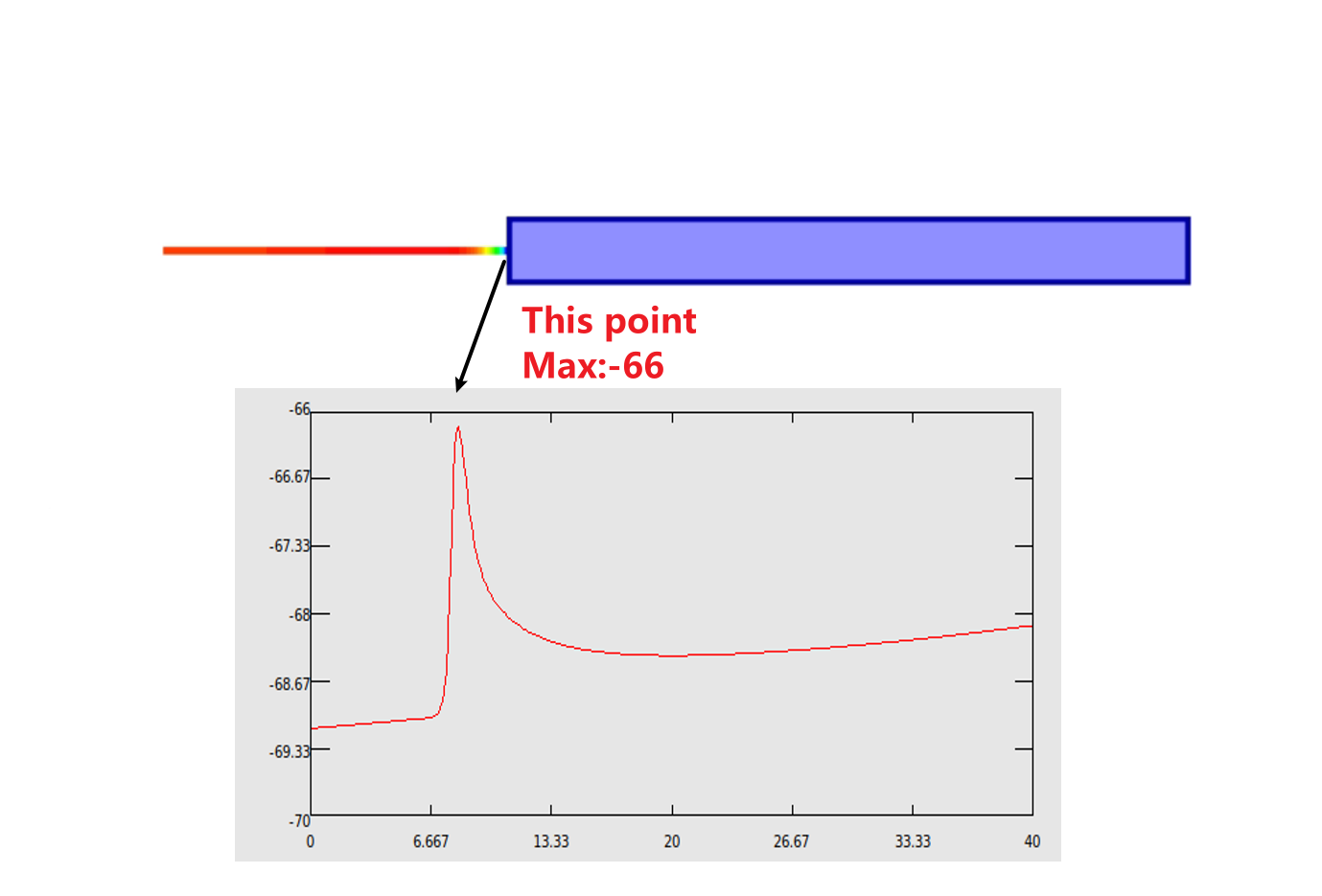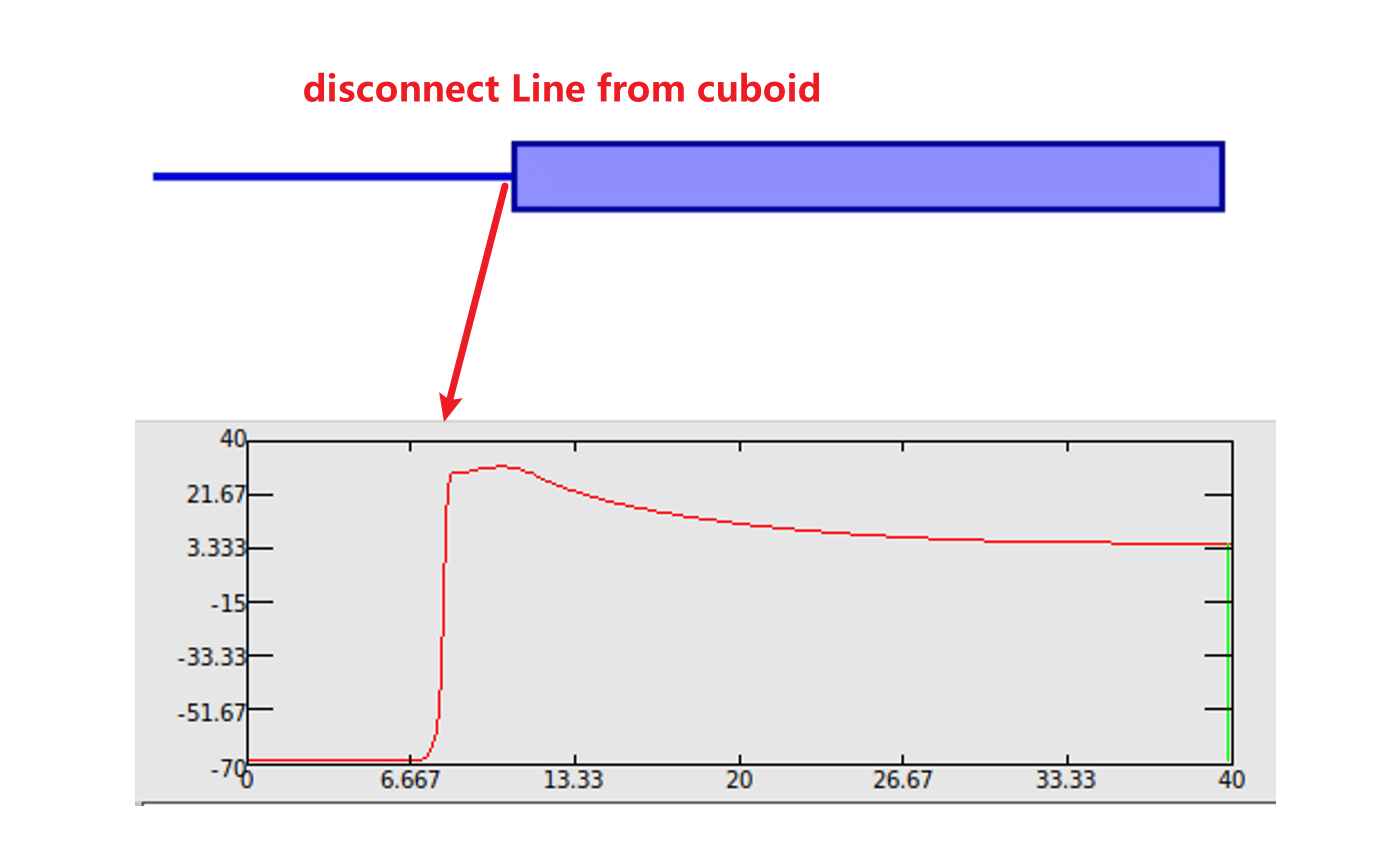Hello,
I am using OpenCARP for simulations and have encountered some issues. May you please provide some solutions?
The model I am using consists of two types of elements: Line (Ln) and tetrahedra (Tt). The model is as shown in the image, with the endpoint of the Line on the right connected to a vertex on the left of the cuboid. My goal is to stimulate the Line on the far left and have the excitation propagate to the cuboid on the right.

However, when I try to stimulate the Line by transmembrane current, I found that the excitation of Line on the left does not propagate to the right tetrahedral elements. I used "Time Series" in Meshalyzer to observe changes in transmembrane potential at the intersection point and found that the maximum value at the intersection point is -66. Therefore, I believe that there is no action potential generated at this location.

However, when I disconnect the Line from the cuboid and check the action potential at the original intersection point, as shown in the image, action potentials are generated after the disconnection.

Referring to previous Q&A from other users, I tried to connect the endpoint of the Line to about 10 vertices of cuboid, but the problem remains unsolved.
Can you please suggest what modifications I need to make to enable the excitation to propagate normally to the cuboid on the right?
Thank you in advance for your assistance!